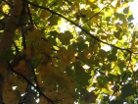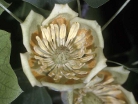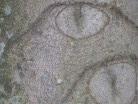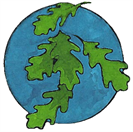



The Hoosier State, 'The crossroads of America'


™

Friday, May 02, 2025
|
|
|
|
|
| A-Z scientific | ||
| A-Z by Common Name | ||
| Families | ||
| Browse by State | ||
| Rare or Endangered Species | ||
| Trees_with_Special_Uses | ||
| Tallest and Biggest |
| Aceraceae Maple Family | ||
| Anacardiaceae Sumac Family | ||
| Annonaceae Custard Apple Family | ||
| Aquifoliaceae Holly Family | ||
| Arecaceae, Palm Family | ||
| Betulaceae Birch family | ||
| Bignoniaceae Trumpet Creeper Family | ||
| Burseraceae Frankincense Family | ||
| Caprifoliaceae Honeysuckle Family | ||
| Chrysobalanaceae Coco-plum Family | ||
| Cornaceae Dogwood Family | ||
| Cupressaceae Cypress Family | ||
| Cyrillaceae Cyrilla Family | ||
| Ebenaceae Ebony Family | ||
| Ericaceae Heath Family | ||
| Fabaceae Pea Family | ||
| Fagaceae Beech Family | ||
| Hamamelidaceae Witch Hazel Ffamily | ||
| Hippocastanaceae Horse Chestnut Family | ||
| Juglandaceae Walnut Family | ||
| Lauraceae Laurel Family | ||
| Leitneriaceae Corkwood Family | ||
| Magnoliaceae Magnolia Family | ||
| Meliaceae Mahogany Family | ||
| Moraceae Mulberry Family | ||
| Myricaceae Bayberry Family | ||
| Myrsinaceae Myrsine Family | ||
| Myrtaceae Myrtle Family | ||
| Nyctaginaceae Four Oclock Family | ||
| Olacaceae Olax Family | ||
| Oleaceae Olive Family | ||
| Pinaceae Pine Family | ||
| Platanaceae Plane Tree Family | ||
| Polygonaceae Buckwheat Family | ||
| Rhamnaceae Buckthorn Family | ||
| Rosaceae Rose Family | ||
| Rubiaceae Madder Family | ||
| Rutaceae Rue Family | ||
| Salicaceae Willow Family | ||
| Sapindaceae Soapberry Family | ||
| Sapotaceae Sapodilla Family | ||
| Simaroubaceae Quassia Family | ||
| Styracaceae Storax Family | ||
| Symplocaceae Sweetleaf Family | ||
| Theaceae Tea Family | ||
| Tiliaceae Lindon Family | ||
| Ulmaceae Elm Family | ||
| Taxaceae Yew Family | ||
| Yucca Family |
| Maple A-Z |
| sumac_family_a-z |
| custard_apple_family_a-z |
| holly_trees_a-z |
| palm_family_a-z |
| birch_family_a-z |
| trumpet_creeper_family_a-z |
| honeysuckle_family_a-z |
| dogwood_family_a-z |
| cypress_family_a-z |
| heath_family_a-z |
| pea_family_a-z |
| beech_family_a-z |
| walnut_family_a-z |
| magnolia_family_a-z |
| olive_family_a-z |
| rose_family_a-z |
| willow_family_a-z |
| franklinia |
| elm_family_a-z |
| Federal List | ||
| State Lists | ||
| Invasive_species |
| Restoration of the American Chestnut | ||
| Restoration of the American Elm | ||
| Sustainable Forestry |
| Contact Us | ||
| Our Contributors | ||
| Photo of the Month | ||
| Usage Requirements | ||
| FAQ | ||
| Report a Broken Link |
| photo_submission |
| Photo Store |


™

|
|
|
|
|
| A-Z scientific | ||
| A-Z by Common Name | ||
| Families | ||
| Browse by State | ||
| Rare or Endangered Species | ||
| Trees_with_Special_Uses | ||
| Tallest and Biggest |
| Aceraceae Maple Family | ||
| Anacardiaceae Sumac Family | ||
| Annonaceae Custard Apple Family | ||
| Aquifoliaceae Holly Family | ||
| Arecaceae, Palm Family | ||
| Betulaceae Birch family | ||
| Bignoniaceae Trumpet Creeper Family | ||
| Burseraceae Frankincense Family | ||
| Caprifoliaceae Honeysuckle Family | ||
| Chrysobalanaceae Coco-plum Family | ||
| Cornaceae Dogwood Family | ||
| Cupressaceae Cypress Family | ||
| Cyrillaceae Cyrilla Family | ||
| Ebenaceae Ebony Family | ||
| Ericaceae Heath Family | ||
| Fabaceae Pea Family | ||
| Fagaceae Beech Family | ||
| Hamamelidaceae Witch Hazel Ffamily | ||
| Hippocastanaceae Horse Chestnut Family | ||
| Juglandaceae Walnut Family | ||
| Lauraceae Laurel Family | ||
| Leitneriaceae Corkwood Family | ||
| Magnoliaceae Magnolia Family | ||
| Meliaceae Mahogany Family | ||
| Moraceae Mulberry Family | ||
| Myricaceae Bayberry Family | ||
| Myrsinaceae Myrsine Family | ||
| Myrtaceae Myrtle Family | ||
| Nyctaginaceae Four Oclock Family | ||
| Olacaceae Olax Family | ||
| Oleaceae Olive Family | ||
| Pinaceae Pine Family | ||
| Platanaceae Plane Tree Family | ||
| Polygonaceae Buckwheat Family | ||
| Rhamnaceae Buckthorn Family | ||
| Rosaceae Rose Family | ||
| Rubiaceae Madder Family | ||
| Rutaceae Rue Family | ||
| Salicaceae Willow Family | ||
| Sapindaceae Soapberry Family | ||
| Sapotaceae Sapodilla Family | ||
| Simaroubaceae Quassia Family | ||
| Styracaceae Storax Family | ||
| Symplocaceae Sweetleaf Family | ||
| Theaceae Tea Family | ||
| Tiliaceae Lindon Family | ||
| Ulmaceae Elm Family | ||
| Taxaceae Yew Family | ||
| Yucca Family |
| Maple A-Z |
| sumac_family_a-z |
| custard_apple_family_a-z |
| holly_trees_a-z |
| palm_family_a-z |
| birch_family_a-z |
| trumpet_creeper_family_a-z |
| honeysuckle_family_a-z |
| dogwood_family_a-z |
| cypress_family_a-z |
| heath_family_a-z |
| pea_family_a-z |
| beech_family_a-z |
| walnut_family_a-z |
| magnolia_family_a-z |
| olive_family_a-z |
| rose_family_a-z |
| willow_family_a-z |
| franklinia |
| elm_family_a-z |
| Federal List | ||
| State Lists | ||
| Invasive_species |
| Restoration of the American Chestnut | ||
| Restoration of the American Elm | ||
| Sustainable Forestry |
| Contact Us | ||
| Our Contributors | ||
| Photo of the Month | ||
| Usage Requirements | ||
| FAQ | ||
| Report a Broken Link |
| photo_submission |
| Photo Store |
Native Trees of Indiana

Custom Search

Indiana


Formed under extremes, the landscape of
Indiana has been the bed of a vast sea stretching
from the Appalachian Mountains to the Rockies,
ground by glaciers, and carved into ravines by their
meltwater. With topography ranging from prairies,
marshlands, rolling hills, steep ravines, rivers and
lakes, there are many activities afforded to the outdoor
enthusiast or nature lover.
Whether by hiking trail, canoe, sailboat, or motor
boat, there are many ways to see the natural features
and forests of Indiana. For the water lovers, the tree
lined shores of Lake Michigan offer plenty of hiking, swimming, and a chance to see towering
200 foot tall sand dunes thousands of years in the making along the shoreline. In northeast
Indiana, you can navigate a series of 9 lakes in Chain O'Lakes State Park and meander
through 10 miles of forest trails surrounded by hickory and oak trees. While on the water, be
on the lookout for the rare freshwater jelly fish found in Indiana. While they can sting, they are
only about the size of a quarter and if their tiny barbs are even able to penetrate your skin, the
sting would be no where near the sting of marine jellies.
The terrain of southern Indiana is a treasure trove for fossil hunters and hikers seeking more
challenging adventures. When glaciers melted during the last retreat, the meltwater created
steep canyons and ravines and left walls of exposed bedrock, sandstone and limestone
(among others) rife with fossils. Due to this jagged landscape, there are many waterfalls,
some seasonal, all throughout southern Indiana. Southern Indiana is also home to Vanderburg
County which houses more native trees on Indiana's Big Tree Registry (2010) than any other
county. There is also Hoosier National Forest, where one of the most important forest
reclamation projects is underway. The talented and dedicated staff have planted American
Chestnut trees in 2 locations in hopes to restore this once mighty tree to its rightful place in the
eastern United States forest ecology. Only time will tell if they will be resistant to the chestnut
blight, which nearly wiped the species off the face of the Earth, but this gives hope to the future
of the species! You can read more about the American Chestnut tree here.
The tree lined roads of Indiana are a sight to behold in the fall as the many species of

State Tree: Tulip Tree

In 1931, the Tulip Tree, sometimes called yellow poplar or tulip poplar, was designated the state tree.
Liriodendron tulipifera is found only in eastern North America and is native to scattered counties throughout the southern half of Indiana. Usually growing 100-200 feet tall, the state champion on Indiana's Big Tree Registry (2010) is 118 feet tall and may be found in the city of Washington. A member of the magnolia family, Tulip trees bloom creamy yellowish bell shaped flowers in the summer. Both the flowers and the leaves have a tulip like shape, which contributed to the species' many
Liriodendron tulipifera is found only in eastern North America and is native to scattered counties throughout the southern half of Indiana. Usually growing 100-200 feet tall, the state champion on Indiana's Big Tree Registry (2010) is 118 feet tall and may be found in the city of Washington. A member of the magnolia family, Tulip trees bloom creamy yellowish bell shaped flowers in the summer. Both the flowers and the leaves have a tulip like shape, which contributed to the species' many
descriptive common names. The distinct leaves of this deciduous tree are yellowish green
and 4 to 6 inches long. Shade intolerant, tulip trees are fast growing and may be as tall as 50
feet in only 20 years. This, combined with the attractive leaf shape, yellow flowers, fall colors,
Indiana Native Tree Facts

Forested acres: 4.5 million
Percent of total area forested: 20%
Predominant forest type: Oak-Hickory, Maple-Beech
Number of National Forests: 1
Number of State Parks/Forests: 33
Number of Tree city USA communities: 67
Number of invasive tree species: 37 (see state list for noxious/invasive plants)
Insects of Concern: Emerald Ash Borer, Gypsy Moth
Pathogen of Concern: Sudden Oak Death
Number of tree families in our collection: 28
Number of endangered or threatened species in our collection: 15
Sources:
Arborday.org
US Forest Service
Indiana Historical Society
United States Department Of Agriculture, Natural Resources Conservation Services: PLANTS Database
Additional state resources:
Indiana Department of Resources
Visit Indiana- Indiana's Official Travel Planning Source
Indiana State Parks and Reservoirs- annual passes available
Purdue University Extension Service-Indiana
Percent of total area forested: 20%
Predominant forest type: Oak-Hickory, Maple-Beech
Number of National Forests: 1
Number of State Parks/Forests: 33
Number of Tree city USA communities: 67
Number of invasive tree species: 37 (see state list for noxious/invasive plants)
Insects of Concern: Emerald Ash Borer, Gypsy Moth
Pathogen of Concern: Sudden Oak Death
Number of tree families in our collection: 28
Number of endangered or threatened species in our collection: 15
Sources:
Arborday.org
US Forest Service
Indiana Historical Society
United States Department Of Agriculture, Natural Resources Conservation Services: PLANTS Database
Additional state resources:
Indiana Department of Resources
Visit Indiana- Indiana's Official Travel Planning Source
Indiana State Parks and Reservoirs- annual passes available
Purdue University Extension Service-Indiana
Tulip Tree, Liriodendron tulipifera Robert H. Mohlenbrock @
USDA-NRCS PLANTS Database / USDA NRCS. 1995. Northeast
wetland flora: Field office guide to plant species. Northeast National
Technical Center, Chester. See usage requirements.
and pyramidal form, make tulip trees a popular amenity tree species. Liriodendron tulipifera is also more disease and insect
resistant than many native trees and also can survive low to moderate fires when mature. The fruit of Tulip trees are actually a
cluster of paper like samaras, which a variety of small wildlife eat the seeds from and deer prefer the foliage over other native tree
species.
Indiana Native Tree Families and Genera

click to enlarge.
Useful information while browsing species:
• How to read a botanical name
• How to use our species boxes:
• How to read a botanical name
• How to use our species boxes:
-Color denotes a tree that is rare or endangered
Please note: This is not a complete list of all native tree families and species found in Indiana. We are constantly working towards a more comprehensive list and will add families and their species as completed.
Additional Resources:
North American Native Tree Families
North American A to Z List by Scientific Name
North American A to Z List by Common Name
North American Native Tree Families
North American A to Z List by Scientific Name
North American A to Z List by Common Name
Follow the links to view species native to Indiana. If the genus is not linked, species are listed on the family page.
Aceraceae, Maple
Anacardiaceae, Sumac
Rhus, Sumac
Annonaceae, Custard-apple
Aquifoliaceae, Holly
Ilex, Holly
Betulaceae, Birch
Betula, Birch
Carpinus, Hornbeam
Corylus, Hazelnut
Ostrya, Hophornbeam
Bignoniaceae, Trumpet Creeper
Caprifoliaceae, Honeysuckle
Cornaceae, Dogwood
Cornus, Dogwood
Nyssa, Tupelo
Cupressaceae- Cypress
Juniperus, Juniper
Taxodium, Baldcypress
Thuja, Arborvitae
Aceraceae, Maple
Anacardiaceae, Sumac
Rhus, Sumac
Annonaceae, Custard-apple
Aquifoliaceae, Holly
Ilex, Holly
Betulaceae, Birch
Betula, Birch
Carpinus, Hornbeam
Corylus, Hazelnut
Ostrya, Hophornbeam
Bignoniaceae, Trumpet Creeper
Caprifoliaceae, Honeysuckle
Cornaceae, Dogwood
Cornus, Dogwood
Nyssa, Tupelo
Cupressaceae- Cypress
Juniperus, Juniper
Taxodium, Baldcypress
Thuja, Arborvitae
Ebenaceae, Ebony
Diospyros, Persimmon
Ericaceae, Heath
Fabaceae, Pea
Fagaceae, Beech
Quercus, Oak
Hamamelidaceae, Witch-hazel
Hippocastanaceae, Horse-chestnut
Juglandaceae, Walnut
Carya, Hickory
Juglans, Walnut
Lauraceae, Laurel
Magnoliaceae, Magnolia
Moraceae, Mulberry
Oleaceae, Olive
Fraxinus, Ash
Pinaceae, Pine
Abies, Fir
Pinus, Pine
Diospyros, Persimmon
Ericaceae, Heath
Fabaceae, Pea
Fagaceae, Beech
Quercus, Oak
Hamamelidaceae, Witch-hazel
Hippocastanaceae, Horse-chestnut
Juglandaceae, Walnut
Carya, Hickory
Juglans, Walnut
Lauraceae, Laurel
Magnoliaceae, Magnolia
Moraceae, Mulberry
Oleaceae, Olive
Fraxinus, Ash
Pinaceae, Pine
Abies, Fir
Pinus, Pine
Platanaceae, Plane-tree
Platanus, Sycamore
Rhamnaceae, Buckthorn
Rosaceae, Rose
Crataegus, Hawthorn
Prunus, Plum/Cherry
Rubiaceae, Madder
Rutaceae, Rue
Salicaceae, Willow
Populus, Cottonwood
Salix, Willow
Styracaceae, Storax
Tiliaceae, Lindon
Tilia, Basswood
Ulmaceae, Elm
Celtis, Hackberry
Ulmus, Elm
Platanus, Sycamore
Rhamnaceae, Buckthorn
Rosaceae, Rose
Crataegus, Hawthorn
Prunus, Plum/Cherry
Rubiaceae, Madder
Rutaceae, Rue
Salicaceae, Willow
Populus, Cottonwood
Salix, Willow
Styracaceae, Storax
Tiliaceae, Lindon
Tilia, Basswood
Ulmaceae, Elm
Celtis, Hackberry
Ulmus, Elm
Indiana Endangered or Threatened Tree Species

Indiana has four classifications for native trees in peril: threatened, endangered, extirpated (meaning no longer present), and rare.
Threatened:
Carya pallida- Sand hickory
Cladrastis kentukea- Kentucky yellowwood
Crataegus pedicellata- Scarlet hawthorn
Crataegus viridis- Green hawthorn
Oxydendrum arboreum- Sourwood
Salix eriocephala- Missouri River willow
Salix serissima- Autumn willow
Taxodium distichum- Bald cypress
Endangered:
Carya texana- Black hickory
Crataegus arborea- Montgomery hawthorn
Crataegus chrysocarpa- Fireberry hawthorn
Crataegus grandis- Grand hawthorn
Crataegus kelloggii- Kellogg's hawthorn
Crataegus prona- Illinois hawthorn
Gleditsia aquatica- Water locust
Magnolia acuminata- Cucumber-tree
Magnolia tripetala- Umbrella-tree
Quercus muehlenbergii- Chinkapin oak
Sideroxylon lycioides- Buckthorn bully
Styrax grandifolius- Bigleaf snowbell
Thuja occidentalis- Arborvitae
Viburnum nudum var. cassinoides- Withe-rod
Viburnum opulus var. americanum- American cranberrybush
Threatened:
Carya pallida- Sand hickory
Cladrastis kentukea- Kentucky yellowwood
Crataegus pedicellata- Scarlet hawthorn
Crataegus viridis- Green hawthorn
Oxydendrum arboreum- Sourwood
Salix eriocephala- Missouri River willow
Salix serissima- Autumn willow
Taxodium distichum- Bald cypress
Endangered:
Carya texana- Black hickory
Crataegus arborea- Montgomery hawthorn
Crataegus chrysocarpa- Fireberry hawthorn
Crataegus grandis- Grand hawthorn
Crataegus kelloggii- Kellogg's hawthorn
Crataegus prona- Illinois hawthorn
Gleditsia aquatica- Water locust
Magnolia acuminata- Cucumber-tree
Magnolia tripetala- Umbrella-tree
Quercus muehlenbergii- Chinkapin oak
Sideroxylon lycioides- Buckthorn bully
Styrax grandifolius- Bigleaf snowbell
Thuja occidentalis- Arborvitae
Viburnum nudum var. cassinoides- Withe-rod
Viburnum opulus var. americanum- American cranberrybush
Rare:
(does not mean species is in peril, only that it is rare due to geographic or environmental limitations)
Catalpa speciosa- Northern catalpa
Cornus rugosa- Roundleaf dogwood
Crataegus intricata- Copenhagen hawthorn
Crataegus succulenta- Fleshy hawthorn
Juniperus communis- Common juniper
Pinus banksiana- Jack pine
Pinus strobus- Eastern white pine
Prunus pensylvanica- Pin cherry
Presumed Extirpated:
Betula populifolia- Gray birch
Populus balsamifera- Balsam poplar
Sorbus decora- Northern mountain ash
(does not mean species is in peril, only that it is rare due to geographic or environmental limitations)
Catalpa speciosa- Northern catalpa
Cornus rugosa- Roundleaf dogwood
Crataegus intricata- Copenhagen hawthorn
Crataegus succulenta- Fleshy hawthorn
Juniperus communis- Common juniper
Pinus banksiana- Jack pine
Pinus strobus- Eastern white pine
Prunus pensylvanica- Pin cherry
Presumed Extirpated:
Betula populifolia- Gray birch
Populus balsamifera- Balsam poplar
Sorbus decora- Northern mountain ash
Looking for a nursery near you?
Check out our nursery listing by county below!
Sorry, we do not currently have any tree nursery listings for this state. We do update these lists, so please check back.
Check out our nursery listing by county below!
Sorry, we do not currently have any tree nursery listings for this state. We do update these lists, so please check back.


Home>Browse by State>Indiana

Want to add your tree to our picture gallery? Click here for details!
-Color denotes a tree that is rare or endangered

Tree lists:
•A-Z by scientific
name
•A-Z by common
name
•By Family
For state A-Z list click state name below.
•A-Z by scientific
name
•A-Z by common
name
•By Family
For state A-Z list click state name below.
We are part of the Hubpages community.
Click here for more info.
Click here for more info.






native deciduous trees like tulip trees, maples, ash, and oak turn brilliant yellows, oranges and reds. The winter brings a different selection of outdoor activities. Searching out frozen waterfalls, skiing, ice fishing or even hitting a toboggan run are just a few ways to get out and enjoy nature. In the spring, the waterfalls come back to life and you can head to the 88 acre old growth forest and archaeological site in Pioneer Mothers Memorial Forest. If history is an interest, Indiana also has earthworks built by prehistoric Indians. Mounds State Park features many earthworks, the largest of which, the Great Mound, is believed to have been constructed around 160 B.C..
Whether you enjoy looking at 386-million-year-old fossil beds in Falls of Ohio State Park, traversing ravines in the 'Little Smokies' of Brown County, boating, fishing, leisurely strolls through deciduous forest trails, canoeing, or exploring from the comfort of your car seat, Indiana has a wonder of options. All within a day's travel, it is easy to get away from the hustle and bustle and find a quiet place for a picnic, a scenic location for a getaway, or just surround yourself in the beauty and sounds of nature.
Whether you enjoy looking at 386-million-year-old fossil beds in Falls of Ohio State Park, traversing ravines in the 'Little Smokies' of Brown County, boating, fishing, leisurely strolls through deciduous forest trails, canoeing, or exploring from the comfort of your car seat, Indiana has a wonder of options. All within a day's travel, it is easy to get away from the hustle and bustle and find a quiet place for a picnic, a scenic location for a getaway, or just surround yourself in the beauty and sounds of nature.




